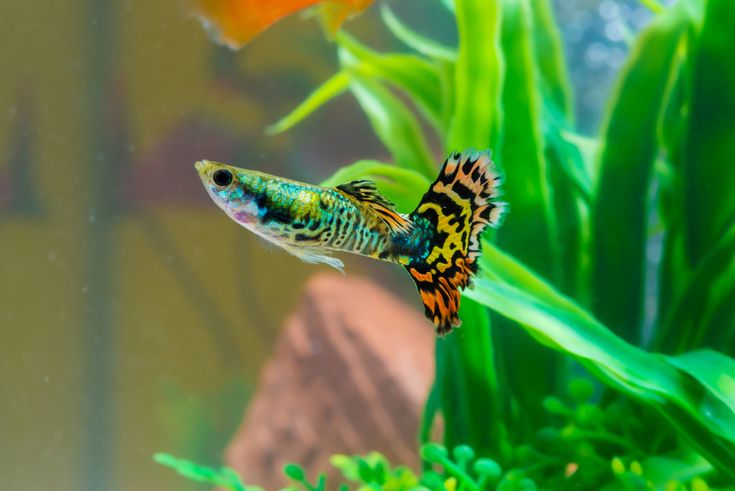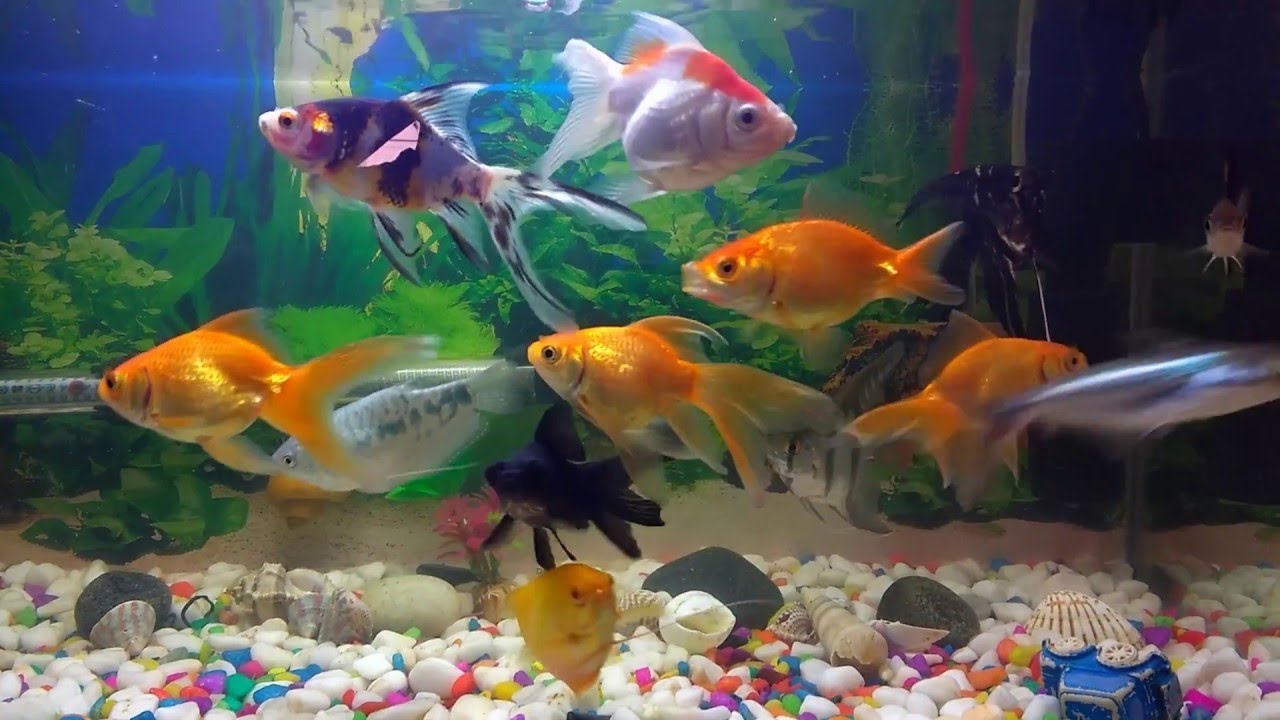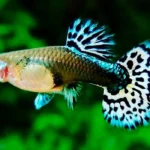Colorful Freshwater Fish Aquarium. There’s just something enchanted about seeing a rainbow of colors flow smoothly across sparkling water, sunlight playing across their glistening scales. Colorful freshwater Aquarium fish aren’t simply pets —they’re living works of art, bringing movement, life, and energy to any aquatic installation. Whether you are an experienced aquarist or an interested newcomer, selecting colorful freshwater fish species can make your tank go from unremarkable to remarkable.
In this guide, we’ll explore the most colorful freshwater aquarium fish that will transform your aquarium into an aquatic paradise. We’ll learn what makes Aquarium 1 unique, how to care for it, and which combinations can bring out the best hues in your tank.

Betta Fish (Betta splendens)
Care Tips
Tank Size: Minimum 5 gallons
Temperament: Aggressive with other males; peaceful alone or with very calm, non-nipping fish
Water Conditions: 76-82°F, pH 6.5–7.5
Neon Tetra (Paracheirodon innesi)
Small but radiant as an in-store LED strip, neon tetras are a classic favorite for anyone who adores a school tank full of aquarium color and vitality.
Why They’re Colorful
With an electric blue stripe and a bold red tail, they dart through your aquarium like flashes of lightning.
Care Tips
Tank Size: 10 gallons or more (for a school)
Temperament: Peaceful and social
Water Conditions: 70–81°F, pH 6.0–7.0
Discus Aquarium Fish (Symphysodon spp.)
Gorgeous and mesmerizing, discus fish are usually regarded as the crown jewels of freshwater aquariums.
Why They’re Colorful
They are also available in bright colors such as bold turquoise, fire engine red, electric blue, and deep yellow, with captivating patterns like some abstract paintings.
Care Tips
Tank Size: 50+ gallons
Temperament: Peaceful but sensitive
Water Conditions: 82–88°F, soft and slightly acidic water (pH 6.0–7.0)
Dwarf Gourami (Trichogaster lalius)
This small South Asian jewel introduces a whirlwind of color into your aquarium.
Why They’re Colorful
From burning red to neon blue to rainbow hues, dwarf gouramis glimmer like polished gemstones, particularly males.
Care Tips
Tank Size: 10 gallons minimum
Temperament: Peaceful with occasional territorial behavior
Water Conditions: 72–82°F, pH 6.0–7.5

Peacock Cichlid (Aulonocara spp.)
Want intense colors and an interesting personality? Look no further than the Peacock Cichlid.
Why They’re Colorful
These fish have vivid colors of electric blue, sunshine yellow, fiery red, and metallic purple.
Care Tips
Tank Size: 55+ gallons
Temperament: Semi-aggressive; best with other cichlids
Water Conditions: 76–82°F, pH 7.8–8.6 (slightly alkaline)
German Blue Ram (Mikrogeophagus ramirezi)
These tranquil dwarf cichlids are such as stained glass in motion.
Why They’re Colorful
German Blue Rams have iridescent blue and yellow scales that shine, orange colors, and red eyes that stand out.
Care Tips
Tank Size: 20 gallons or more
Temperament: Peaceful, best in pairs
Water Conditions: 78–85°F, pH 6.0–7.5
Guppies (Poecilia reticulata)
Small, low-maintenance, and infinitely diverse, guppies are little more than living Skittles.
How They’re Colored
From bold red to pastel blue and leopard spots to mosaic, guppies are a color variety. Each one is nearly individual
Care Tips
Tank Size: 10 gallons or more
Temperament: Peaceful and friendly
Water Conditions: 74–82°F, pH 7.0–8.0

Killifish (Nothobranchius spp. and others)
They may not be name-brand, but Killifish are among the most brightly colored freshwater fish in existence.
Why They’re Colorful
Men tend to wear vibrant blues, oranges, and reds with elaborate patterns and stripes — reminiscent of fashion fish models.They may not be name-brand, but Killifish are among the most brightly colored freshwater fish in existence.
Care Tips
Tank Size: 5–10 gallons (depending on species)
Temperament: Varies by species — some peaceful, others feisty
Water Conditions: 72–78°F, pH 6.0–7.5
Boesemani Rainbowfish (Melanotaenia boesemani)
These men don’t shy away when it comes to color contrast.
Why They’re Colorful
Boesemani Rainbowfish are split down the middle — literally. The head is a brilliant blue, but the back glows in orange-yellow hues.
Care Tips
ank Size: 30 gallons minimum
Temperament: Active but peaceful
Water Conditions: 74–80°F, pH 7.0–8.0
Bonus Round: Tips to Enhance Fish Colors
Supply a color-enhancing diet – Spirulina, krill, and specially processed pellets enhance natural colors.
Have a dark substrate – Colors look best against black or dark blue.
Include live plants – Stress is reduced by them, giving a more natural appearance and house-like feeling to fish.
Have water in spotless condition – Bad water destroys colors. Treat yourself to a good filter and test regularly.
Don’t overcrowd – Colored fish get stressed if they can’t swim. Provide space to breathe and swim.

Conclusion
Building a colorful freshwater aquarium is not only about looks — it’s about building a small-scale ecosystem that brings delight, serenity, and wonder to your daily existence. Colorful Freshwater Fish. From the blazing fins of a Betta, the shock of blue stripe on a Neon Tetra, or the majestic majesty of a Discus, every colorful freshwater fish on this list provides its own individual flash of brilliance.
Your aquarium can be a canvas — and these fish, your living brushstrokes. So pick carefully, care for them well, and enjoy the stunning art show that appears each time you look into your tank
FAQs
Can Colorful Freshwater Fish live together in the same tank?
Yes—colorful freshwater fish, but with caution. Certain colorful freshwater fish such as Betta males or Cichlids may be territorial or aggressive. Always check compatibility before combining species.
Do colorful fish lose their color over time?
They can — particularly if they’re stressed, ill, or living in poor water conditions. A good diet, clean tank, and low-stress environment maintain or even improve fish’ vibrant colors.
What can I feed my colourful freshwater Fish to enhance their color?
Search for color-enhancing foods that contain ingredients such as spirulina, krill, brine shrimp, or carotenoids. Quality flake or pellet food that says “color-enhancing” on the label will also prove worth it in the long run.
How many colourful freshwater Fish should I keep together?
It will vary on species and the size of your tank. Schooling fish such as Tetras or Rainbowfish will need a minimum of 6 kept in groups. Territorial species such as Bettas or Cichlids will either have a preference to be alone or need tankmate choice carefully chosen.
Are colorful freshwater fish harder to care for than duller ones?
Not colorful freshwater fish, really. Some of the colored fishes, such as Guppies or Mollies, are extremely robust. Others such as Discus or German Blue Rams need more delicate conditions and more attention. Select according to your experience.










